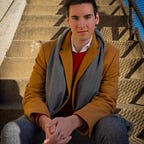American Disparities
“Where’s the white wrapping paper?” yelled my mother, as she helped me finish wrapping the presents before my coach arrived. Every year, my team does a “Basketball-Christmas Giveback” where we take presents to underprivileged families in Austin, Texas. My coach arrived, I loaded the gifts into his van, and we rode off to do our best Santa impression. Unlike the 15 miles between Trenton and Princeton that Professor Omar Wasow references in his MLK Day speech, one only has to cross I-35 — six lanes of traffic — in Austin to see the great disparities that still exist within our country.
A distance of only 1500 feet separates the richest from those living below the poverty line in my hometown of Austin, ranked the most economically segregated metro area in the entire nation by the University of Toronto’s Martin Prosperity Institute. Arriving at the community center, I unloaded the presents and waited for the families to come. I recognized one kid, Trevor, who I had played ball with before. He was hobbling on crutches when his family came. I had broken my leg before and asked him what happened to him, but he hadn’t broken anything — he had been shot. Trevor expressed this wasn’t anything out of the ordinary in his neighborhood — what a difference six lanes of highway can make.
After my brief interaction with Trevor, several things that became radically clear to me about the disparities across I-35. One side was home to some of Austin’s best schools, while the other had underfunded, underprivileged schools. One side boasted a community of college-educated individuals, while the other had a staggering number of people who did not graduate high school and who depended on welfare programs (like food stamps) to survive.
From the moment Trevor and I had been born, our lives were set on radically different trajectories based primarily on the fact that we entered the world on different sides of I-35. While I fed into some of Austin’s best schools, Trevor fed into underfunded and inferior schools. While all my neighbors were college-educated, most of Trevor’s neighbors didn’t graduate from high school and were likely on food stamps. Now, there have always been wealthy neighborhoods, but the people who cooked, cleaned, and worked for the wealthy used to at least live nearby — close enough to vote for the same judges and representatives. This proximity is less and less the case today, even in Austin, one of the most progressive and diverse cities in America.
It is this increasing isolation of the different classes which I believe is primarily responsible for the disparities we face today and lack of working solutions aimed at alleviating them. The wealthy don’t always understand the circumstances or desires of those they are trying to help. This, in turn, typically leads to implementing ineffective solutions, which resemble seasonal volunteerism more so than a program aimed towards creating sustainable economic improvement. Returning home that night, I started thinking about what kind of program could sustainably bring about lasting change and address all the problems Austin’s disparities cause?
It has been thought that wealthier individuals moving into poorer neighborhoods — injecting new streams economic revenue and improving public amenities — would help alleviate the issues economically underprivileged neighborhoods face. But the reality is, when affluent people move into neighborhoods, property values rise; this raises property taxes and forces the very people this theory seeks to help to leave, relocating to even worse living and socio-economic conditions.
In attempting to figure out an ideal solution, I realized I don’t know one that could address all the problems without causing unintended consequences or if one is even possible. It is likely that there is no perfect solution to social and economic inequality. Nevertheless, I do believe in creating community-driven solutions. If we, as individuals, form cross-community connections, broadening our understanding of the issues that challenge the well-being of one another and connecting education to service, we can begin to find solutions that work within the specific context of our communities.
Though the disparities our nation faces today are more complex and their solutions more elusive than ever before, we must fight the impulse to avoid confronting these difficult realities. We can’t turn our heads while another part of society suffers; we must acknowledge both sides of I-35. When we as individuals start forming cross-community connections, broadening our horizons to understand others, and connecting education with service, then we can begin leading lives of purpose for the public good; a vital first step in any solution to alleviate society’s disparities.
